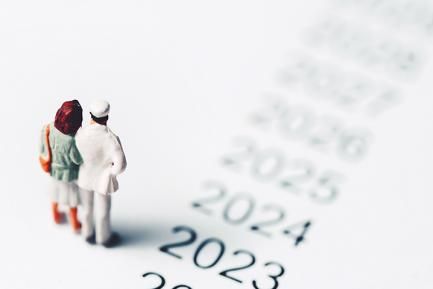Is the economic recovery reaching all pockets?
The recovery of economic activity is finally a tangible reality, clearly reflected in the main economic indicators. Having plummeted to more than 20% below the pre-pandemic level, by Q2 2021 GDP had recovered nearly two-thirds of the lost territory. But is the economic recovery reaching all pockets?

The past experience of the real estate and financial crisis does not invite optimism. Between 2008 and 2013, GDP fell by more than 8%, leading to a sharp rise in inequality. Even more worrying is the fact that the recovery which began in 2014 took a long time to reach all households. The inequality indicators declined very slowly during the post-crisis years. In fact, when the pandemic irrupted last year, the Gini index, the benchmark inequality indicator, was still higher than in 2008. This statement is valid both for the Gini index which measures income inequality before taking into account public sector transfers (Gini-pre) and for the version of the index which analyses changes in income inequality taking into account public transfers (Gini-post).

The economic crisis triggered by the pandemic has also led to a sharp rise in inequality. The Gini-pre index increased by more than 10 points between February and April last year.1 Although a historic increase, it is worth noting that the rise in inequality relative to the fall in economic activity was substantially lower than that witnessed during the real estate and financial crisis. Specifically, in the crisis of 2008-2013, for every pp decline in GDP, the Gini-pre index increased by 0.9 pps. In the current crisis, in contrast, this sensitivity has been halved: for each point of GDP, the Gini-pre index has moved by 0.4 points. The increase in the Gini-post index relative to the fall in GDP has also been halved. But beyond the change in the sensitivity of the Gini indices to GDP, it is particularly noteworthy that the moment the economy began to recover, inequality has begun to decline immediately.
- 1. Gini index produced using information from more than 3 million payrolls deposited into CaixaBank accounts. For more information on how real-time inequality indicators are built using internal CaixaBank data, see the Dossier «The impact of the COVID-19 crisis on inequality in Spain» in the MR11/2020.

To explain what lies behind the shift in the behaviour of inequality in the current crisis, we must look to the labour market. Indeed, the evolution of employment accounts for around 90% of the change in the Gini index.2 The nature of the present crisis, being so different from that of 2008-2013, is one determining factor. The previous recession was much longer and had a particular impact on specific sectors, such as real estate, thus forcing many people to reorient their career and making it difficult for them to rejoin the labour market. In contrast, the crisis generated by the pandemic is taking place at a much quicker rate, and the demands for sectoral relocation are lower. In addition, many people who have stopped working have received the support of an instrument that has enabled them to maintain their working relationship with the company where they worked, making it far easier for them to quickly return to employment with the arrival of the economic revival: namely, ERTE furlough schemes.
- 2. See O. Aspachs, R. Durante, A. Graziano, J. Mestres, J. Montalvo and M. Reynal «Real-time inequality and the welfare state in motion: evidence from Covid-19 in Spain», Economic Policy, forthcoming, for a detailed explanation of how this has been estimated. In the previous crisis, changes in employment explained around 80% of the change in the Gini-pre index, according to OECD estimates.


Finally, it should also be noted that the improvement in the Gini indices is occurring across the various groups of the population. The Gini indices for young people and for people born outside Spain increased much more than for the rest of the population during the early stages of the pandemic. However, since we began to see a rebound in economic activity, the situation of these groups has improved substantially. In July, there were no longer such notable differences in the change in the Gini index by age group. As for immigrants, the Gini indices have also improved significantly, although they remain somewhat above those for Spaniards.
The latest inequality indicators invite optimism, both because of the trends apparent at the aggregate level and those among the various groups. But the rise in inequality compared to the pre-pandemic level remains significant. The increase in the Gini-post index in July of this year, of 1.3 points compared to the pre-pandemic level, is not far off that which occurred during the 2008-2013 recession, when it rose by 2.3 points. There is still a long way to go before we reach pre-pandemic levels. The coming quarters, in which we expect the recovery to be consolidated, will be key in determining whether history will be repeated and economic activity and inequality will once again follow separate paths, or whether, on the contrary, this time is different. You can follow it live on the portal realtimeeconomics.caixabankresearch.com, where you will find near real-time information on the main inequality indicators.




